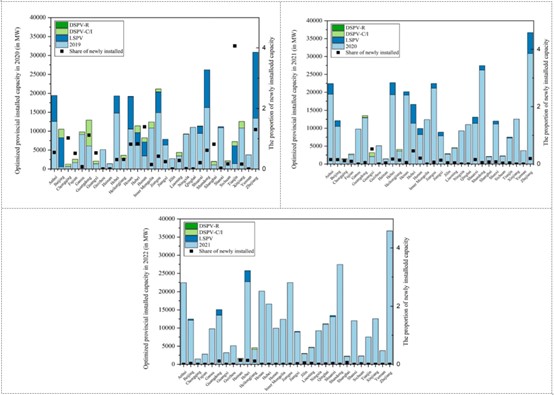
ABSTRACT
Solar photovoltaic (PV) systems have developed rapidly in China, and the issues on where to locate the solar PV stations become critical. In some provinces, the markets are already saturated, and even solar energy curtailment has occurred due to oversupply. Thus, depicting an efficient deployment picture of the solar PV stations in China is in urgent need. To explore this issue, a profit-maximizing model is proposed to optimize the allocation of solar PV stations and interprovincial transmission strategies. The profit of solar PV stations in each province/municipality is evaluated from both economic and environmental perspectives. The economic performance is evaluated by net present value and levelized cost of energy, and the environmental benefits refer to the abatement of CO2 emissions. The results show that the northwestern and northeastern regions are not suitable to further develop solar PV systems in recent years, while the developed regions including the Yangtze River Delta, Tianjin, Beijing, and Guangdong should be encouraged to deploy more solar PV systems, especially the distributed solar photovoltaics for the commercial/industrial sectors. In 2020, the newly-added installed capacity in Zhejiang, Shandong, Beijing, and Henan is supposed to excess 8500 MW.
KEYWORDS
Solar PV stations; Environmental-economic performance; Efficient deployment; Optimization
JCR CLASSIFICATION
Q1
Energy
https://doi.org/10.1016/j.energy.2021.119834
